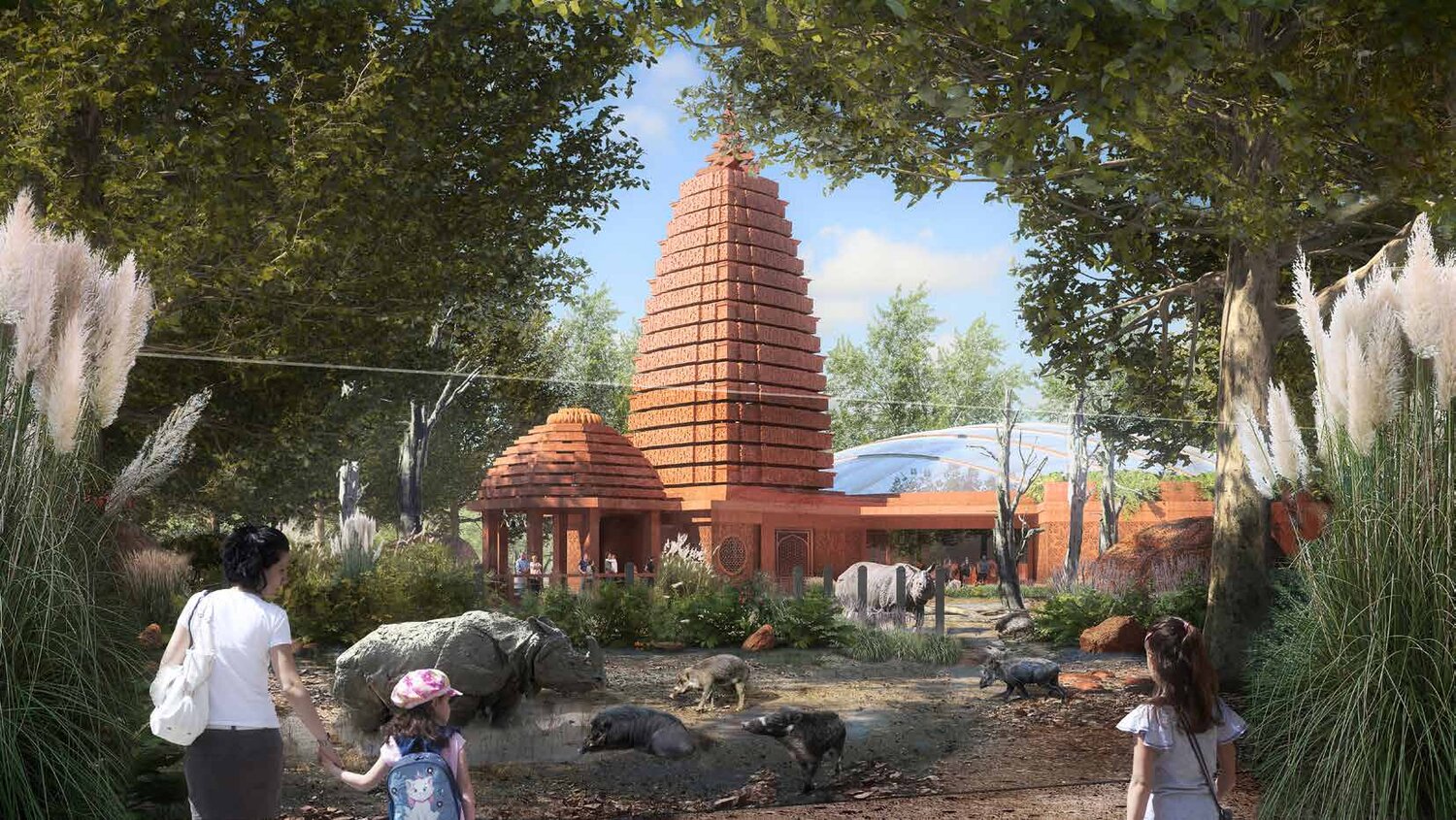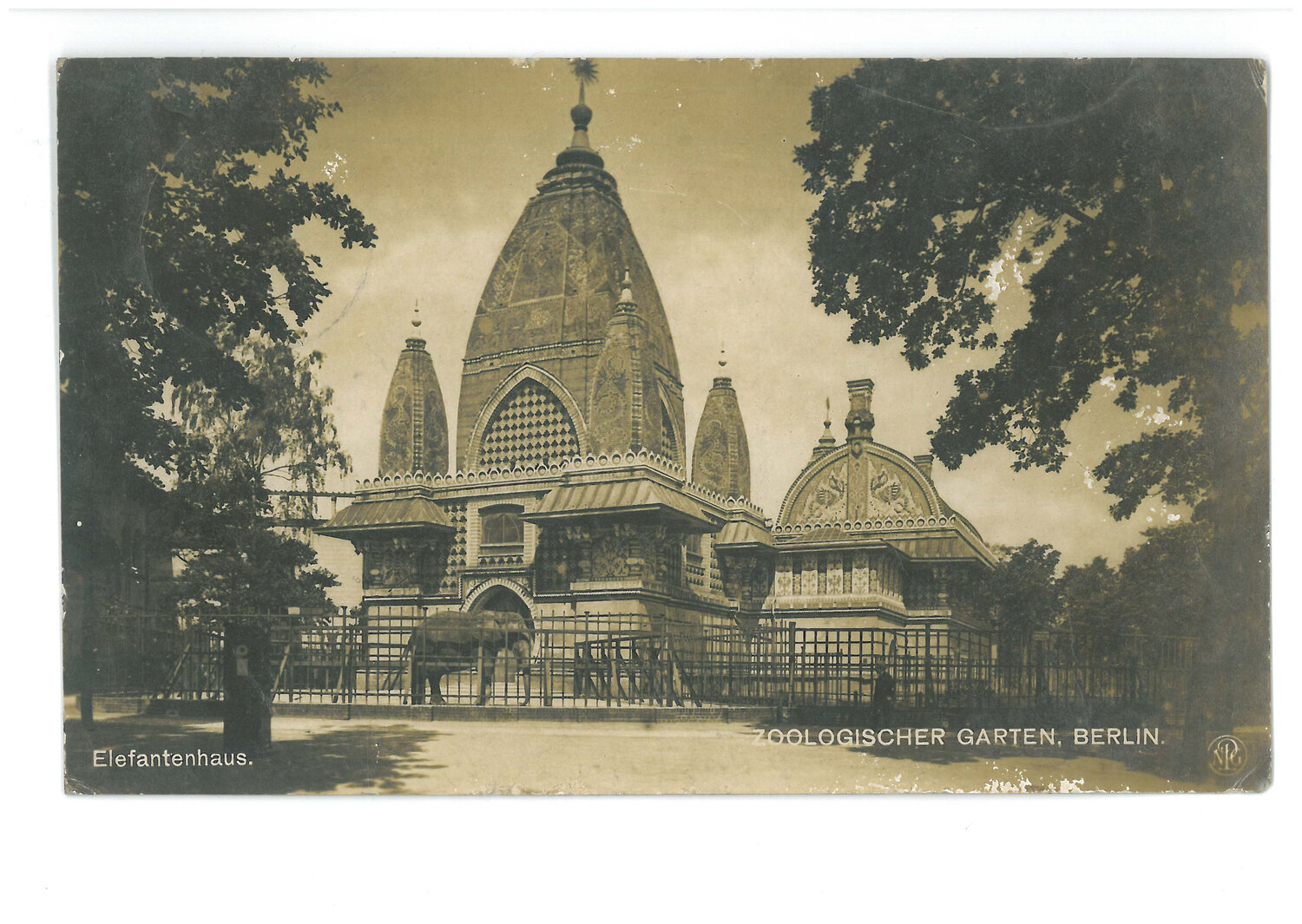On the occasion of its 175th anniversary, Zoo Berlin has presented plans for a “Rhino Pagoda” – a fascinating new monument to species conservation. Building work is set to start next year, meaning that soon Zoo Berlin will be home to another impressive animal habitat. The main building will be in the style of an Indian pagoda set amidst exotic swampland, where delighted visitors can watch Indian rhinoceroses chomping on juicy leaves and tapirs plunging into cool water.
The current facilities for the Indian rhinoceroses and tapirs at Zoo Berlin are showing their age and no longer fulfil the requirements of modern, species-appropriate animal keeping. The new structure is set to change all that, while also creating a magnificent new landmark for the Zoo. The centrepiece of the 14,000 m² complex for Indian rhinoceroses, tapirs and warty pigs will be a building with a gateway in the shape of a 25-metre-high Indian pagoda.
Inside the building, the animals will be able to enjoy a spacious indoor area of around 520 m² complete with natural flooring, a wallowing pool, a large area to run around in, and a UV-permeable roof that lets in sunlight. This means that, even in winter, these warmth-loving creatures will have plenty of daylight. The new building is intended to recall the Zoo’s former “Elephant Pagoda”, which once stood proudly on the site next to today’s elephant habitat. The iconic structure was built in 1873 but destroyed during the Second World War.
The pagoda will be set in surroundings that recall the animals’ natural swampy habitat, with high grasses and idyllic streams under the dappled shade thrown by Zoo Berlin’s large old trees. At more than 5,200 m², the Indian rhino habitat will be much bigger than the current 3,247 m² area. Housing the rhinoceroses with warty pigs will make the habitat more diverse and interesting, and the large panoramic windows will give visitors a fascinating view into the animals’ habitat. It will also be the first zoo facility in the world where visitors can watch Indian rhinoceroses underwater.
“The Rhino Pagoda will pay homage to natural diversity and be a monument to species conservation,” says Zoo and Tierpark Director Dr Andreas Knieriem. “After years of planning, we are delighted that work can soon begin on the Rhino Pagoda.” The new habitat will go far beyond the legal requirements for the keeping of rhinoceroses. “At the same time, we are staying true to our 175-year tradition and erecting a building that will blend perfectly with the architectural style of our Zoo.”
The impressive new building will stand between the Lion Gate entrance, the Hippo House, and the Hans im Glück petting zoo. Demolition work on the existing structure will begin at the end of this year, with construction starting in 2020. The animals currently living there will be moved to other facilities in the coming months, with a few individuals being sent to other zoos. The Rhino Pagoda is expected to open in 2021.
The Rhino Pagoda project is estimated to cost around €20 million. Of that, €10.6 million will come from Zoo Berlin’s own resources, and €9.4 million from GRW funding (regional economic funding). Like Zoo Berlin’s Panda Garden, the Rhino Pagoda has been designed by architectural firm dan pearlman Erlebnisarchitektur.

